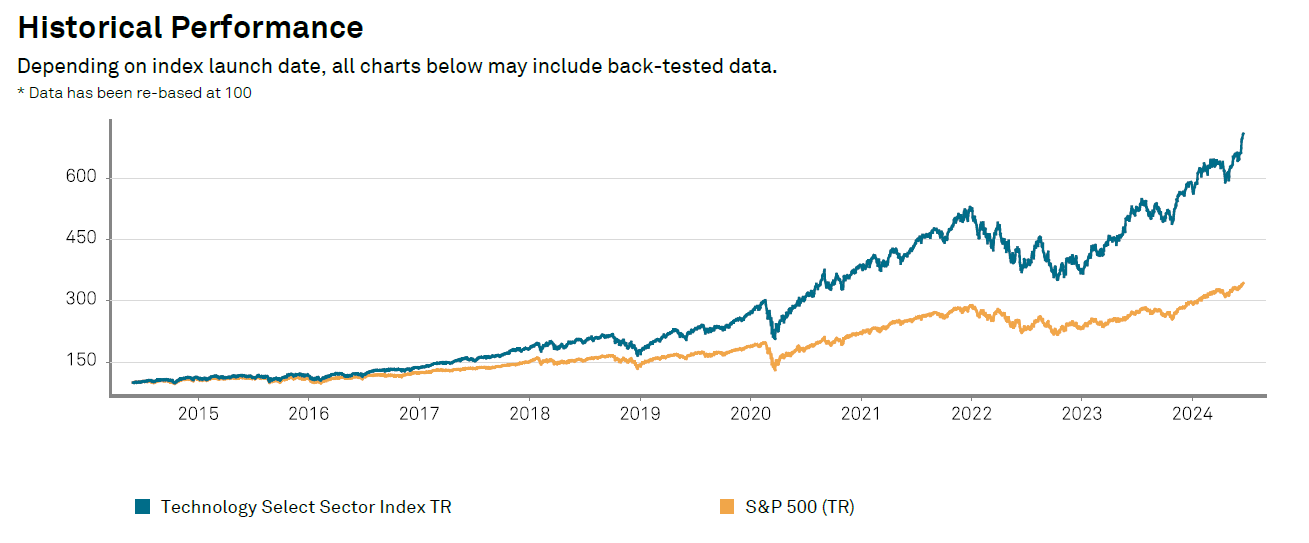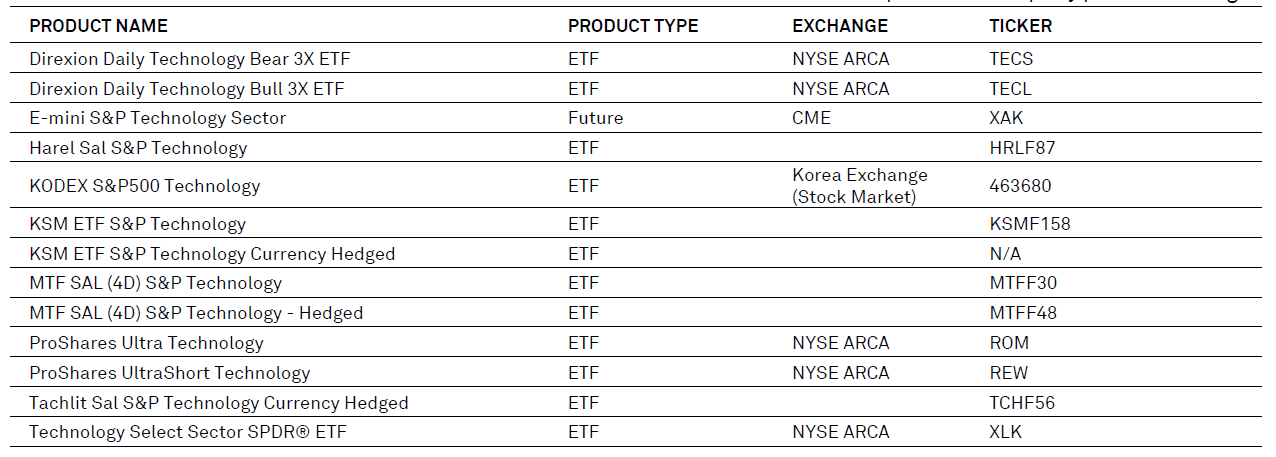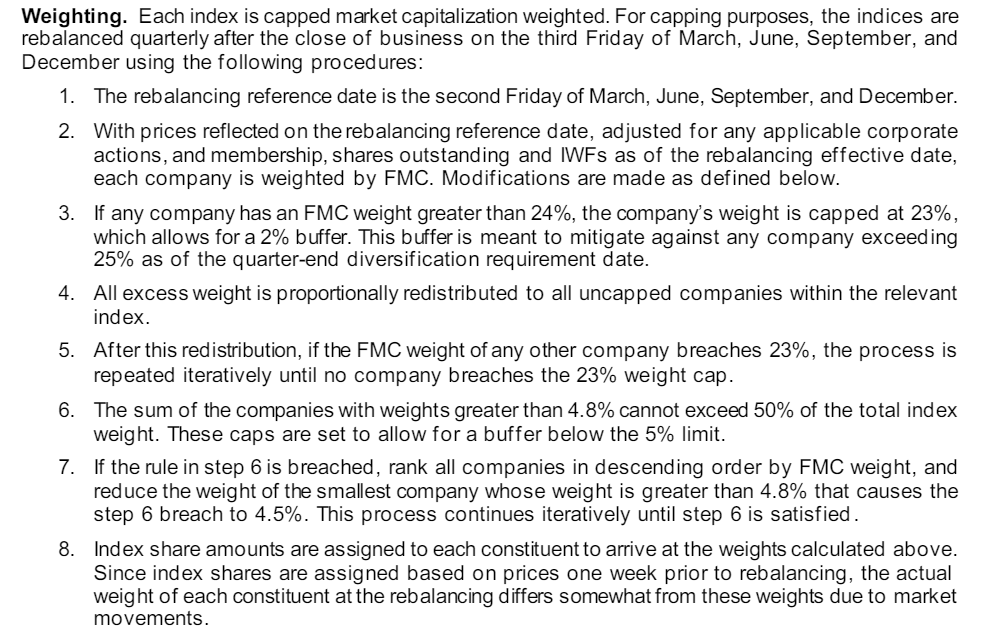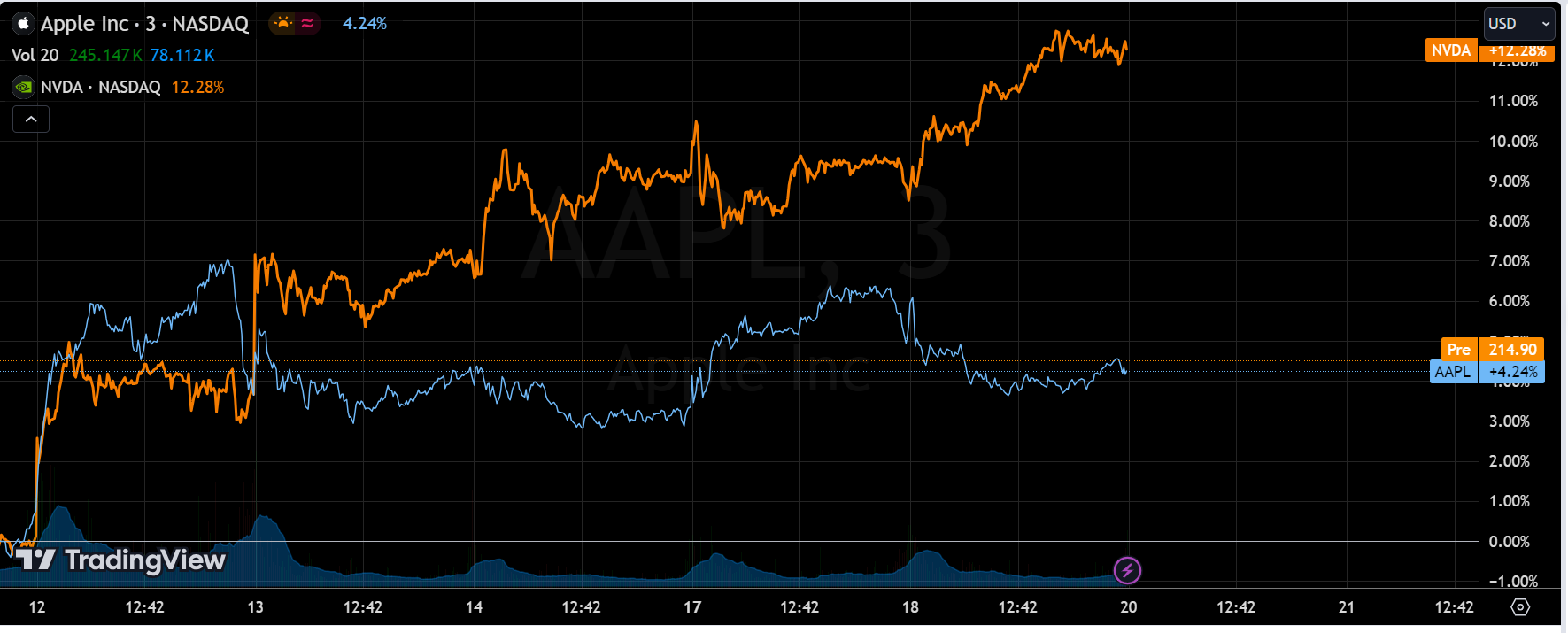Will 10B Transaction Happen On Reversing Apple, Nvidia Weights?
summaries
June 21 will be critical for $NVIDIA Corp(NVDA)$ and $Apple(AAPL)$ as the S&P Technology Select Sector will undergo a major rebalancing, with index ETFs such as $Technology Select Sector SPDR Fund(XLK)$ and 13 others being heavily impacted;
The Index follows diversification rules,, which stipulate that a single company may not have a weighting of more than 25%, as well as a total large-cap weighting of more than 50%;
$Microsoft(MSFT)$ becomes the top weight, NVDA replaces Apple as the second, up from 4.5% to over 20%, with an expected inflow of $10 billion, and Apple's weight is cut to 4.5% from 21%, with an expected outflow of $11 billion;
Index funds will adopt strategies to minimize the market impact, as well as to reduce transaction costs and market risk, and will not simply affect the market in a crude manner;
Derivatives may be an important tool for index ETF tracking to reduce tracking error.
June 21 is a critical day for investors in Nvidia and Apple, as the world's second-largest tech stock ETF $Technology Index ETF-SPDR(XLK)$'s index, the S&P Technology Select Sector, is in for a major "rebalancing". This index has far outperformed the $S&P 500(.SPX)$

The Rebalancing Bug
The index tracked by this ETF is S&P's Technology Select Sector, which has several features
Weighted by outstanding market capitalization
Quarterly rebalancing (Rebalancing)
Diversification rules apply.
Market capitalization weighting is the way mainstream indexes are weighted, but its disadvantage is that large-capitalization companies can be absolutely dominant, thus leaving small- and mid-capitalization companies " have no influence".
For example, the current 3335B market capitalization of $NVIDIA (NVDA)$ , which is weighted as much as 21%, is up 0.21% for every 1% rise in the index. The $25 billion market cap $Advanced Micro Devices(AMD)$ has a weighting of just 2%. span> The weighting is just 2%, with the index rising just 0.02% for every 1% increase.
As a result, S&P has implemented "diversification" rules that limit large-cap companies (see specific rules), with two keys
Single company weights may not be capped at more than 25% (and a 2% buffer is in place)
The sum of the weights of companies with a weight greater than 4.8% must not exceed 50% of the total weight of the index
Why are NVDA and AAPL weights switched?
Once a company's weight exceeds 23%, it is adjusted below 23%, so this adjustment of MSFT and NVDA over 21% is basically almost to the sky, and even if NVDA rises another 10% later, the weight won't exceed 23%;
As a result of the huge Q2 gains, each of the three triple trillion companies MSFT\NVDA\AAPL can now be weighted over 20%, and the fourth AVGO is well over the 4.5% reached at the end of Q1 (well over the threshold of 4.8%), which puts the total weighting of these four companies well over 50%, subject to the following adjustments:
Using the June 14 closing price on the reference date, the lowest of the four, $Broadcom(AVGO)$ , was moved back to 4.5% and the other three continued to be allocated (and the result was still over 50%);
AAPL, the second-lowest of the four, was moved back to 4.5%, leaving MSFT and NVDA to maintain almost all of their weights in the 20%-21% range, just barely meeting the rule that "companies greater than 4.8% should not have a combined weight greater than 50% of the total index weight".
That's why, Apple's weighting has been cut from 21% to 4.5%, while NVIDIA's weighting has been raised from 4.5% to over 20%
Since both AAPL and NVDA rose more than XLK in Q2, the actual percentage of downward adjustments for NVDA and the actual percentage of downward adjustments for AAPL will both become larger, corresponding to changes of about $11 billion and $10 billion, respectively.
But only in "theory", which is why Bloomberg uses words like "as much as" in its reports, because the reality is much more complicated. It's much more complicated in practice.
Strategies to reduce market impact
The main goal is to minimize Tracking Error, so it will try to keep in line with the index changes as much as possible, so it tends to look for the day or two when the index constituents are replaced for concentrated trading, so as not to cause greater bias due to the volatility of the constituents' share prices.
However, for individual stocks with different market capitalization and liquidity, if the passive fund's move itself causes a Market Impact on that stock, it has to be cushioned by strategies such as "Buffering" and " Packeting".
Buffering. This applies more to individual stocks that move in and out of the index frequently.
As NVDA\AAPL and MSFT are currently very close in market capitalization, NVDA is more volatile than the other two as its market cap has risen from $2.5 trillion to $3.33 trillion in the past two weeks. If it fails to close the gap over the next three months, then meets a collective pullback in the broader market and falls back to third place, it will be a repeat of this quarter's tragedy for AAPL.
Index ETFs set up buffer bands for some individual stocks in order not to affect the market itself with frequent large trades, initially transferring only a portion of the position, and then continually replenishing the position to the same level as the index if it is up to par for a consecutive period of time;
In order to replicate the index during this period, derivatives (e.g., options) may be used to cover the corresponding positions.
Packeting. This applies more to big-money ETFs or individual stocks that engage in mass trading.
Divide the total volume into shares, e.g., into four shares, and on the initial trading day, sell one-fourth of the company's A shares and buy one-fourth of the company's B shares; continue to execute the remaining trades for the next three trading days or as market conditions dictate; and execute only a portion of the total volume on each trade until the full adjustment is completed.
The benefits are lower transaction costs by reducing market shocks and price slippage from large-scale trading, as well as reducing single-market point-in-time risk.
It may even have begun trading some of the index weights between the index reference date (June 14) and the effective date (June 21), as well as potentially using derivatives to cover corresponding positions in order to replicate the index.
So the $10 billion in trading volume in a single day that many investors understand, thus pushing up NVDA or pulling down AAPL stock, isn't going to happen that easily.
The goal of an index ETF is to track the index, not to affect it because of adjustments.
Passive funds operate on a bright card, and they naturally utilize more tools to reduce the impact of arbitrageurs.
The high liquidity of derivatives gives them more tools to respond, and may instead be the biggest winners.
Disclaimer: Investing carries risk. This is not financial advice. The above content should not be regarded as an offer, recommendation, or solicitation on acquiring or disposing of any financial products, any associated discussions, comments, or posts by author or other users should not be considered as such either. It is solely for general information purpose only, which does not consider your own investment objectives, financial situations or needs. TTM assumes no responsibility or warranty for the accuracy and completeness of the information, investors should do their own research and may seek professional advice before investing.




Great article, would you like to share it?